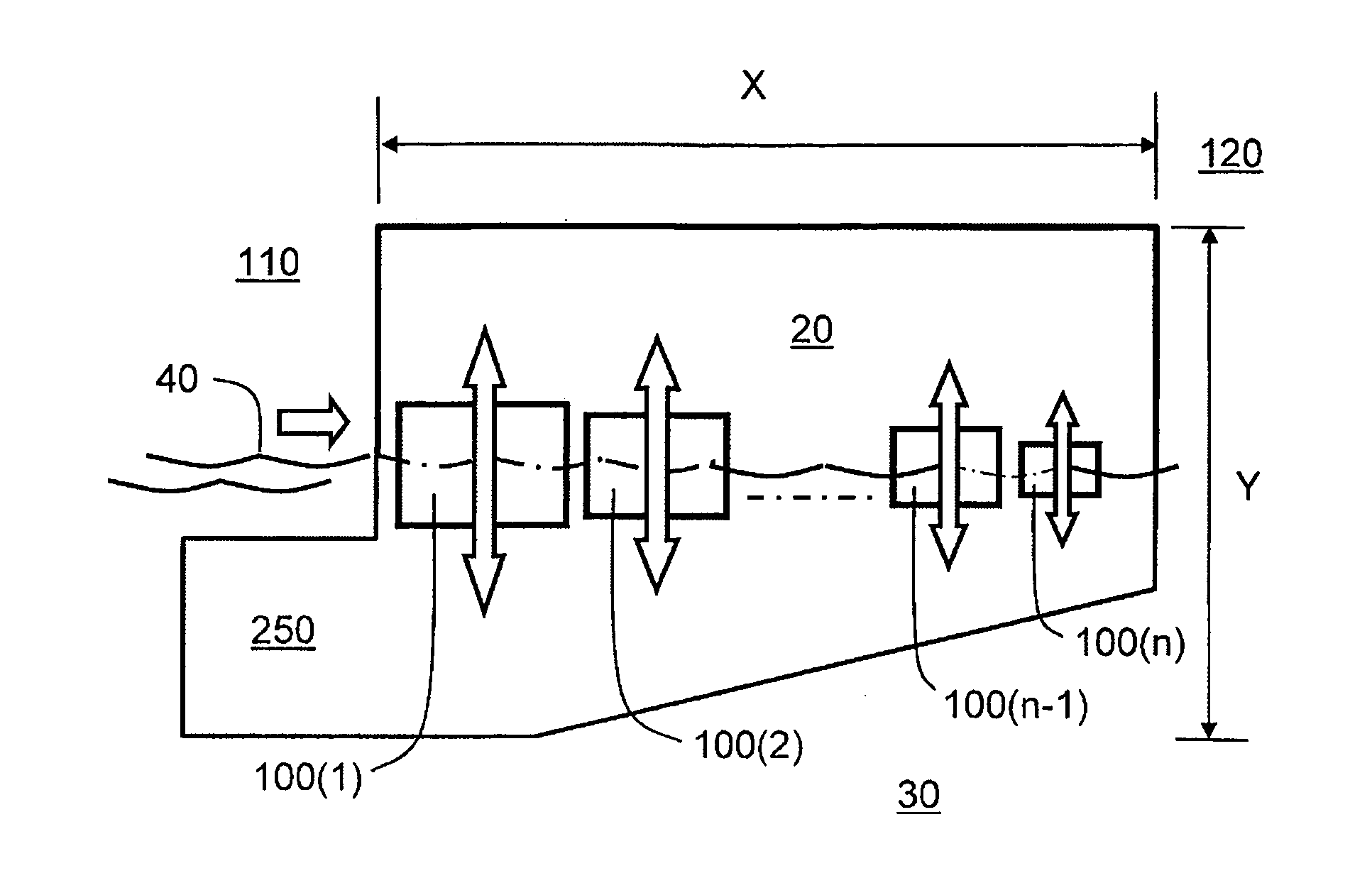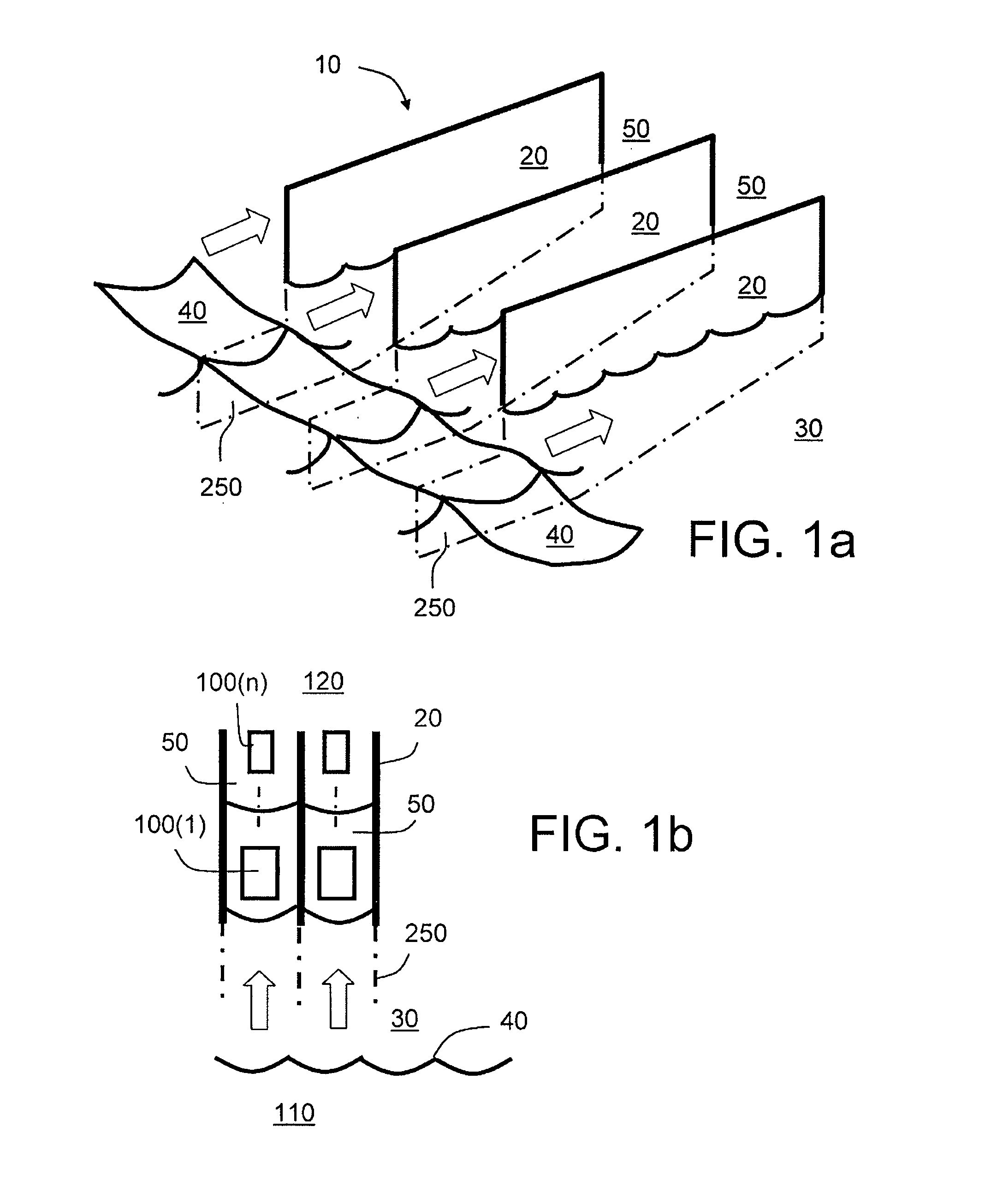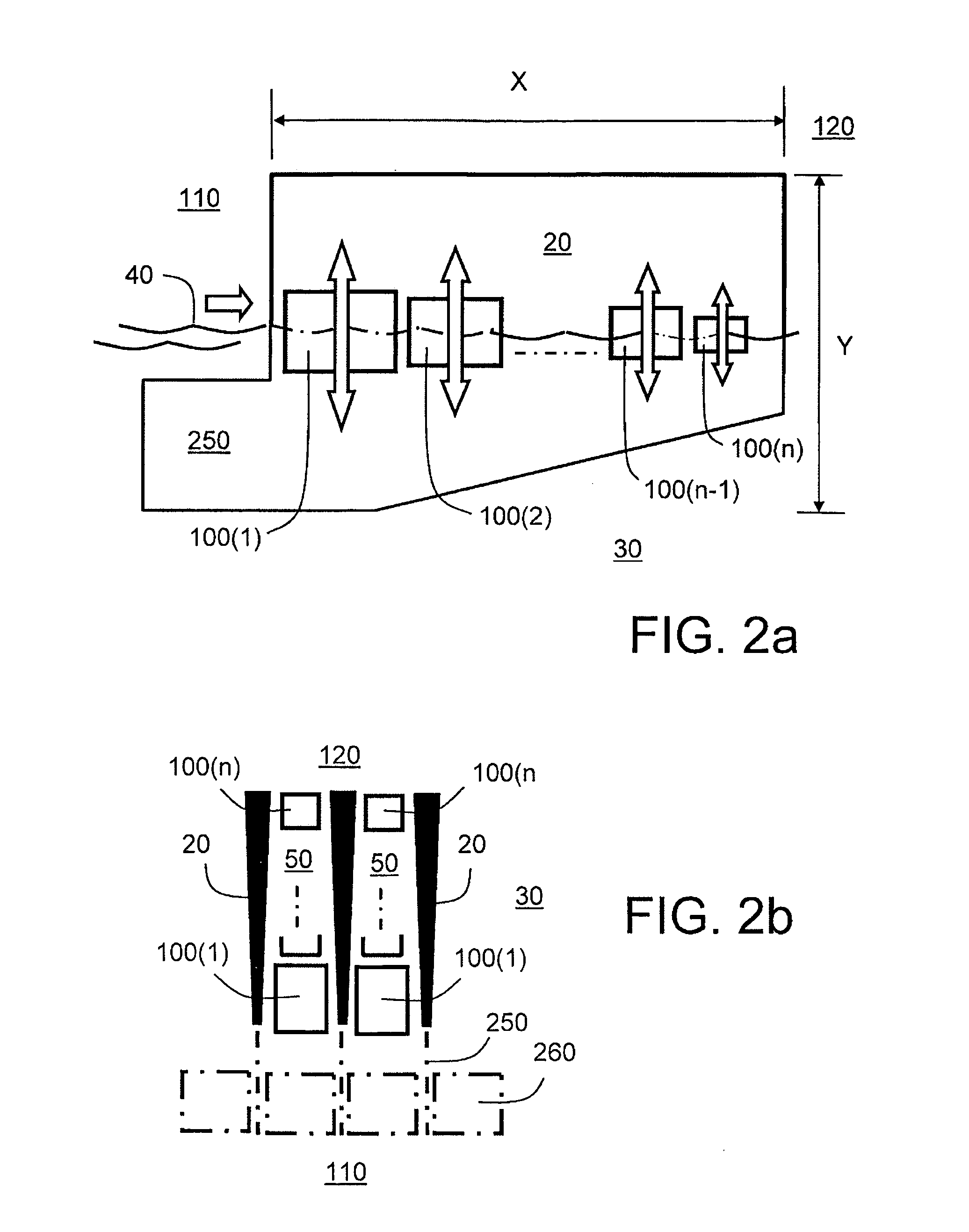Energy System
a technology of energy systems and energy systems, applied in the field of energy systems, can solve the problems of stifling the development of alternative renewable energy technology, low fossil fuel cost, and insufficient use of ocean wave energy for electricity generation, and achieve the effect of enhancing reliability in operation, and efficient and simple approach to conversion
- Summary
- Abstract
- Description
- Claims
- Application Information
AI Technical Summary
Benefits of technology
Problems solved by technology
Method used
Image
Examples
Embodiment Construction
[0091]In overview, the present invention concerns an ocean wave energy system as indicated generally by 10 in FIGS. 1a to 5. The system 10 comprises a plurality of substantially mutually parallel planar wall components 20 which are at least partially submerged in an ocean 30 when in use. In operation, ocean waves 40 are guided along elongate channels 50 formed between corresponding adjacent planar wall components 20; namely, the ocean waves 40 are “formed” between the components 20. The channels 50 are each furnished with one or more mutually independently movable floats 100. When a single float is employed, the single float beneficially comprises a plurality of mutually hinged float sections therein, the hinged float sections being of progressively diminishing length. The one or more floats are operable to rise and fall relative to their respective planar wall components 20 in response to ocean waves 40 propagating along the channels 50, the one or more floats 100 thereby generatin...
PUM
 Login to View More
Login to View More Abstract
Description
Claims
Application Information
 Login to View More
Login to View More - R&D
- Intellectual Property
- Life Sciences
- Materials
- Tech Scout
- Unparalleled Data Quality
- Higher Quality Content
- 60% Fewer Hallucinations
Browse by: Latest US Patents, China's latest patents, Technical Efficacy Thesaurus, Application Domain, Technology Topic, Popular Technical Reports.
© 2025 PatSnap. All rights reserved.Legal|Privacy policy|Modern Slavery Act Transparency Statement|Sitemap|About US| Contact US: help@patsnap.com



